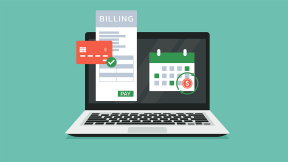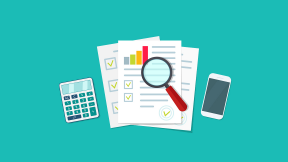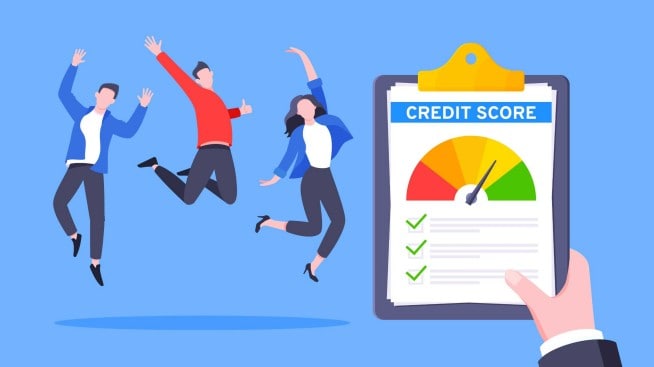300 to 600: Poor credit score and what it means

What is a bad credit score? Well, there are several credit score ranges. For instance, 780–850 may be considered "excellent" while 720–780 may be seen as "good." But when it comes to a range that may be seen as bad, a score between 300 (the lowest) and 600 fits into the “poor” category.
A poor or bad credit score may serve as inspiration to manage your credit better. You may need to raise your credit score before finding approval for new lines of credit. Luckily, your credit rating isn’t a static number or singular situation. Motivated to work on improving your credit score? This article explores what poor credit may mean for you and options to help you bring it up.
What is a bad credit score?
VantageScore® calculates the most commonly used consumer credit scores. Within the VantageScore model, a credit score between 300 and 660 may fall into three separate categories:
- Very Poor: 300–499
- Poor: 500–600
- Fair: 601–660
FICO® is another major credit scoring model. Within the FICO model, a credit score between 300 and 660 may fall into two separate categories:
- Poor: 300–579
- Fair: 500–669
These two major credit scoring models use similar credit score ranges but calibrate them somewhat differently. In all cases, credit score helps credit lenders, such as banks and landlords, assess potential borrowers. This score works as a tool to help measure your past credit behavior, such as the way you paid your bills, with a representative number.
Who decides if I have a poor credit score?
FICO, or the Fair Isaac Corporation, works as a data analytics company. It sells its distinct credit scoring services to lenders. You can also access your FICO score through the major credit bureaus: Equifax®, Experian™ and TransUnion®.
VantageScore was established jointly in 2006 by the three major credit bureaus. It uses the same credit reporting data FICO does to calculate credit scores. But VantageScore prioritizes factors a bit differently. This means you may have different credit score results from each of these agencies.
How do you get a poor credit score?
There are a few types of credit behaviors that are factored into your credit score calculation. Payment history, or your habit of debt repayment, usually counts as the biggest one. For example, if you frequently paid off your credit accounts late or have defaulted on a loan, that would potentially lower your credit score.
The mix of your types of credit, like mortgages and credit cards, can impact your credit score as well. Usually, the more variety the better for your credit rating. If, for instance, you have only a single type of credit card, that might contribute to a lower credit score.
How much of your revolving credit you use can also play a role in your credit score. This is your credit utilization ratio, which measures how much revolving credit you use divided by the total amount of revolving credit that’s available to you. Credit utilization is part of why closing a credit account can sometimes lower your credit score; by decreasing your available revolving credit, your credit utilization ratio increases, which can be seen as risky by lenders.
What does a poor credit score mean for you
The ramifications of having a “poor” credit score may not show up until you apply for credit. Lenders often look at credit scores when deciding how much credit to offer or the rates at which they may do it.
Your credit score can be used by lenders to assess how risky it may be to do business with you. For instance, if you have an excellent credit score you may be seen as low risk for banks, landlords, or other creditors. Whereas someone with the lowest credit score of 300 might be perceived as more of a risk when it comes to loaning them money.
How to find my credit score
You can find out your credit score without impacting it through Credit Journey®. You can enroll in Credit Journey for free and access your credit score, and a free credit report provided by Experian, as well as many helpful credit-building tools. This service also offers credit monitoring to help raise your awareness and help you keep up with with how your credit score evolves. Credit Journey can help you keep learning as you become more involved in your credit. You are also entitled to one free copy of your credit report a year from the three major credit bureaus.
How to increase your credit score
Understanding your credit score takes time and patience, but you’re not alone. Tools like Credit Journey can show you ways you may be able to increase your credit score with tangible steps and habitual actions. Credit Journey can also help you with insightful alerts about changes in your credit score. You can find out how your credit score responds to your credit usage and adjust your behaviors as you see fit. Credit Journey can help keep you on track to earn a better credit score for yourself step by step.
The best way to build credit is the way that works for you. If you already bank with Chase, you can enroll in Credit Journey right on your mobile device in your Chase Mobile® app to take a first step toward improving your credit score.
In summary
What is a bad credit score? Turns out there are several ways to answer that question. But even if your credit score is very poor or fair, there are actions you can take to improve it. First you can check your score with Credit Journey to find out where you stand. Then you can use Credit Journey tools like alerts and credit monitoring to help you reach your credit score goals.



